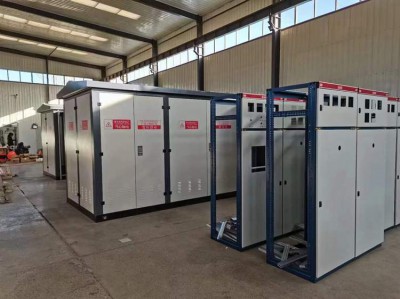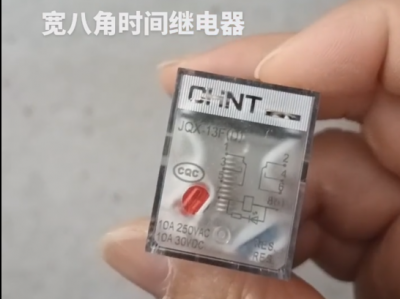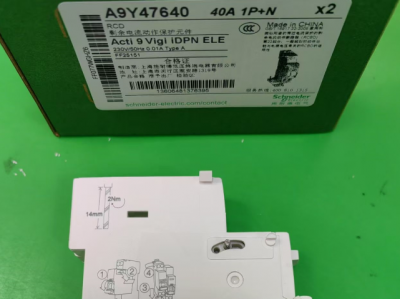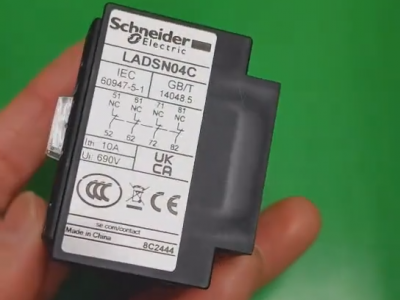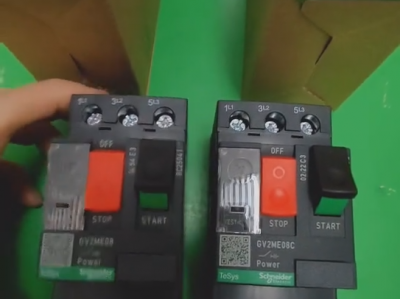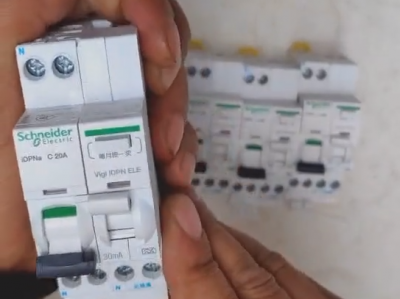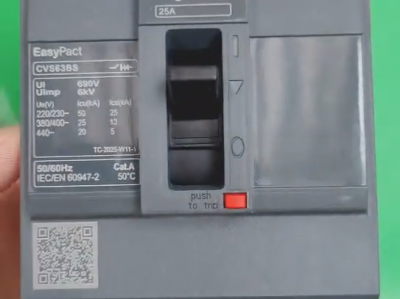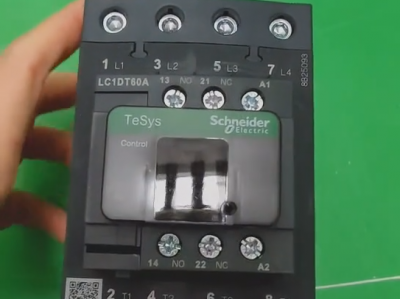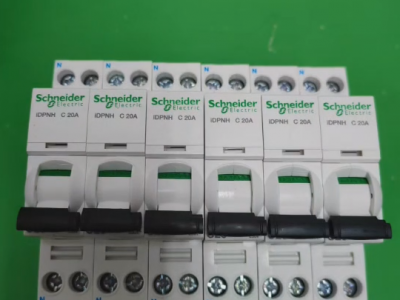Siemens S7-1200 series Programmable Logic Controller (PLC)
Product description
The Siemens S7-1200 series PLC is a compact and modular automation controller suitable for small and medium-sized industrial automation projects. The following is a comprehensive analysis of its core features and technical details:Siemens 6ES7253-1AA22-0XA0 (EM253)
I. Hardware Architecture and Expansion Capability
1. **CPU Models and Performance*Siemens 6ES7235-0KD22-0XA0*
- **Basic Models**: CPU 1211C (6 inputs/4 outputs), CPU 1212C (8 inputs/6 outputs), CPU 1214C (14 inputs/10 outputs).
- **Enhanced Models**: CPU 1215C (dual Profinet interfaces), CPU 1217C (250KB working memory).
- **G2 Series Upgrade**: The G2 series launched in 2025 has a main frequency increased to 150 MHz, the execution time of Boolean instructions is shortened to 0.08 μs, supports 8 high - speed counters (1 MHz) and 8 PTO/PWM channels, and the processing speed is 10 times higher than the previous generation.
2. **Modular Design*Siemens 6ES7231-5QA30-0XB0 module*
- **Signal Modules**: Support expansion of digital (SM1221/1222), analog (SM1231/1232), thermistor (SM1231 RTD), etc. Up to 8 signal modules can be connected.
- **Communication Modules**: CM1241 RS485 (Modbus RTU), CM1243 - 5 PROFIBUS, CB1241 RS232. Support the expansion of 3 communication modules.
- **Signal Boards**: SB1221 (digital), SB1231 (analog). They can be directly inserted into the right side of the CPU without taking up extra space.
3. **Special Models*6ES7142-5AF00-0BA0 Siemens*
- **SIPLUS S7 - 1200**: Supports extreme environments from - 25°C to +70°C, passes the EN 50155 railway certification, and is suitable for rail transit and harsh industrial environments.
- **Fault - Safe Type**: CPU 1214C F and 1217C F support the SIL3 safety level and can integrate functions such as emergency stop and safety door monitoring.
II. Programming and Development Environment
1. **TIA Portal Software*Siemens 1FL6034-2AF21-1LH1 Servo Motor**
- **Multi - language Support**: Ladder Diagram (LAD), Function Block Diagram (FBD), Structured Text (STL), Structured Control Language (SCL), Flow Chart (GRAPH).
- **New Features in Version V17**: Causal Matrix (CEM) programming language, multi - user collaborative development, cloud integration (OPC UA/MQTT), enhanced simulation tool (supports collaborative simulation of OB blocks).
- **Engineering Efficiency**: Drag - and - drop configuration, IntelliSense, offline simulation, online diagnosis (supports firmware version rollback).
2. **Firmware Update*Siemens converter 6SE6440-2UD42-0GA1**
- **Version V4.4.1**: Supports TIA Portal V16 and above, optimizes the motion control algorithm, and enhances the stability of the PROFINET network.
- **Upgrade Limitations**: Version V3.x cannot be upgraded to V4.x. Firmware updates need to be carried out through a memory card or TIA Portal, and Web access is supported.
III. Communication and Protocols
1. **Integrated Communication Interfaces*Siemens V20 Inverter 15KW of Model 6SL3210-5BE31-5UV0*
- **PROFINET**: 10/100 Mbps adaptive RJ45, supports IRT isochronous synchronization (G2 series), and can connect up to 31 devices.
- **S7 Communication**: Supports 3 connections as a server and can communicate with S7 - 200/300/400.Chint converters (NVF2G-18.5/TS4 or NVF2G-18.5/PS4*
- **Web Server**: Built - in web page for monitoring I/O status and diagnostic information, supports HTML5 interface.
2. **Extended Protocols*Siemens 6EP1 252-0AA01 chain power supply*
- **Modbus TCP**: Can be directly configured through the CPU integrated port, supports master - slave mode.
- **USS Protocol**: Controls the MM440 frequency converter through CM1241 RS485. A single network supports 16 devices, and up to 3 networks (48 devices) are supported.
- **OPC UA**: The G2 series supports the OPC UA server and can be seamlessly connected to MES/ERP systems.
IV. Application Areas and Cases
1. **Typical Scenarios**
- **Manufacturing**: Production line control (such as conveying, welding, and inspection on automobile assembly lines), packaging machinery (labeling, filling).
- **Process Automation**: Small - scale water treatment systems (pump control, liquid level adjustment), food and beverage industry (temperature/pressure closed - loop control).
- **Building Automation**: HVAC systems (air conditioning, lighting), access control and security (swipe card control, video linkage).
- **Motion Control**: The G2 series supports 8 - axis PTO and is suitable for robot joint control and CNC machine tool positioning.
2. **Industry Cases**
- **Railway Signaling System**: The SIPLUS S7 - 1200 passes the EN 50155 certification and is used for track switch control and train lighting management.
- **Pharmaceutical Industry**: Expands analog modules to realize clean room temperature and humidity monitoring and supports FDA 21 CFR Part 11 electronic signatures.
V. Performance and Advantages
1. **Core Parameters**
- **Processing Speed**: 0.08 μs for Boolean instructions (G2 series), 1.2 μs for floating - point operations.
- **Memory Configuration**: The maximum working memory is 250KB (CPU 1217C), the loading memory is 4MB, and it supports expansion with a SIMATIC memory card.
- **Real - time Clock**: Maintained by a supercapacitor for 20 days, and can be extended to 1 year with an external battery board.
2. **Technical Advantages**
- **High Cost - effectiveness**: Compared with similar products, the hardware cost is reduced by 30% and the maintenance cycle is shortened by 50%.
- **Ease of Use**: The modular design supports plug - and - play. The wizard function of TIA Portal simplifies the configuration of PID and motion control.
- **Reliability**: Passes the EN 61000 - 6 - 2/6 - 4 electromagnetic compatibility certification, and the mean time between failures (MTBF) exceeds 100,000 hours.
VI. Selection Suggestions
| Model | Applicable Scenarios | Typical Configuration Examples |
| CPU 1211C | Simple logic control (such as starting and stopping of small devices) | Directly connect sensors and relays without expansion modules |
| CPU 1214C | Medium - sized projects (such as production line automation) | Expand 4 digital modules + 2 analog modules |
| CPU 1215C | Multi - network communication (such as connecting HMI and third - party devices) | Dual Profinet ports are respectively connected to the host computer and the frequency converter |
| CPU 1217C G2 | High - speed motion control (such as robots and CNC machine tools) | 8 - axis PTO synchronous control with an IRT network |
VII. Common Problems and Solutions
1. **Communication Failure**
- **Phenomenon**: Profinet connection is interrupted.
- **Troubleshooting**: Check for IP address conflicts and the quality of the network cable. Use the "Online Diagnosis" function of TIA Portal to view the device status.
2. **Program Abnormality**
- **Phenomenon**: The CPU frequently enters the STOP mode.
- **Troubleshooting**: Check for memory overflow (monitor the working memory usage) and incorrect hardware interrupt configuration (such as interference from high - speed counter signals).
3. **Firmware Upgrade Failure**
- **Phenomenon**: The "MAINT" light flashes but the update is not completed.
- **Solution**: Ensure that the memory card is formatted as FAT32, the firmware file matches the CPU model, and try to upgrade using the Web access method.
Through the above features, the Siemens S7 - 1200 series PLC demonstrates excellent flexibility and reliability in the small and medium - sized automation field. Especially after the upgrade of the G2 series in 2025, its advantages in motion control, network integration, and extreme environment applications are further consolidated. In actual selection, a comprehensive evaluation should be carried out in combination with the number of I/O points, communication requirements, processing speed, and budget.
Application Cases of Siemens S7 - 1200 Series PLC in Industrial Automation
The Siemens S7 - 1200 series PLC is widely used in the field of industrial automation due to its modular design, high cost - effectiveness, and strong expansion ability. The following are in - depth application cases in typical industries, analyzed in combination with the latest technological upgrades in 2025 (such as the G2 series) and the actual project results:
I. Intelligent Automotive Manufacturing: Core Control of Flexible Production Lines
Case 1: New Energy Vehicle Battery Assembly Line
- **Hardware Configuration**
- **CPU 1217C G2**: Processing speed of 0.08 μs per Boolean instruction, supports 8 - axis PTO synchronous control.
- **Signal Modules**: SM1231 analog input (detects cell voltage/temperature), SM1223 digital output (controls welding robots).
- **Communication Modules**: CM1243 - 5 PROFIBUS connects third - party devices, CB1241 RS485 for debugging frequency converters.
- **Technical Highlights**
- **Intelligent Error Prevention**: Real - time collection of visual inspection data through the Profinet network, combined with RFID tags to trace material batches, achieving an assembly error rate of 0.1%.
- **Energy Efficiency Optimization**: Based on the energy management module of TIA Portal, dynamically adjust the device power consumption, saving 15% of the annual electricity cost.
- **Results**: The production capacity of a single production line is increased to 1200 batteries per day, and the fault downtime is reduced by 70%.
# Case 2: Collaborative Control of Robots in Welding Workshop
- **Hardware Configuration**
- **CPU 1215C**: Dual network ports are respectively connected to the host computer and the ABB robot controller.
- **Process Module**: TM PosInput positioning module (±0.05mm accuracy), supports multi - robot trajectory synchronization.
- **Technical Highlights**
- **IRT Isochronous Synchronization**: The G2 series supports PROFINET IRT, ensuring the coordination of 6 robots' actions within a 1ms cycle.
- **Edge Computing**: Real - time analysis of the welding current waveform through the Web server of S7 - 1200 to predict the device life.
- **Results**: The welding qualification rate is increased from 95% to 99.2%, and the device maintenance cost is reduced by 40%.
II. Process Automation: Precise Control and Green Transformation
Case 1: Clean Room Environment Monitoring in the Pharmaceutical Industry
- **Hardware Configuration**
- **CPU 1214C F**: Fault - safe PLC, supports the SIL3 safety level.
- **Special Modules**: SM1231 RTD thermistor module (±0.1°C accuracy), SM1221 digital input (monitors the differential pressure in the clean room).
- **Technical Highlights**
- **Compliance Design**: Passes the FDA 21 CFR Part 11 certification, uses electronic signatures to record temperature and humidity data, and meets audit requirements.
- **Energy Recovery**: Optimizes the air - conditioning system using the PID algorithm, reducing the energy consumption of the clean room by 25%.
- **Results**: Passes the FDA audit for 3 consecutive years, saving 800,000 yuan in annual energy consumption costs.
Case 2: Smart Water Management System
- **Hardware Configuration**
- **SIPLUS S7 - 1200**: Designed for a wide temperature range from - 25°C to +70°C, supports the EN 50155 railway certification.
- **Expansion Modules**: SM1232 analog output (adjusts the valve opening), CM1241 RS485 connects the ultrasonic flowmeter.
- **Technical Highlights**
- **Edge - Cloud Collaboration**: Uploads data to AWS IoT through the RevPi Core 3+ module, achieving a remote fault diagnosis response time of less than 5 minutes.
- **Predictive Maintenance**: Trains an AI model based on historical data to give a 72 - hour early warning of pump group failures.
- **Results**: The leakage rate is reduced from 8% to 3%, and the manual inspection cost is reduced by 60%.
III. Buildings and Infrastructure: Intelligentization and Energy - Efficiency Revolution
Case 1: Energy Management of Super High - Rise Buildings
- **Hardware Configuration**
- **CPU 1215C**: Dual network ports are respectively connected to the BA system and the energy management platform.
- **Communication Protocols**: Modbus TCP reads meter data, OPC UA connects to the ERP system.
- **Technical Highlights**
- **Dynamic Load Balancing**: Automatically adjusts the operation of the refrigeration unit according to the electricity price period, increasing the peak - valley electricity price difference revenue by 30%.
- **Digital Twin**: The simulation module of TIA Portal can simulate the energy consumption curve in real - time, supporting virtual commissioning.
- **Results**: Saves 1.2 million yuan in annual electricity costs and reduces carbon emissions by 18%.
# Case 2: Smart Transportation Hub
- **Hardware Configuration**
- **SIPLUS S7 - 1200**: Passes the EN 50155 certification and is deployed on the subway platform.
- **Expansion Modules**: SM1222 digital output (controls the platform screen doors), SM1231 analog input (monitors the ambient PM2.5).
- **Technical Highlights**
- **Redundant Design**: Dual - CPU hot - standby architecture, ensuring the system's MTBF > 100,000 hours.
- **Emergency Response**: Integrates the fire alarm system and completes the full - station broadcast and lighting switch within 1 second in case of danger.
- **Results**: Reduces the passenger waiting time by 20% and decreases the device failure rate by 50%.
IV. Motion Control: High Precision and High Dynamic Performance
Case 1: Semiconductor Wafer Handling Robot
- **Hardware Configuration**
- **CPU 1217C G2**: 8 - axis PTO synchronous control, supports 1 MHz high - speed pulse output.
- **Drive System**: V90 servo drive (positioning accuracy of ±1μm), achieves a 0.2ms synchronization cycle through the IRT network.
- **Technical Highlights**
- **Trajectory Planning**: The motion control library of TIA Portal supports S - curve acceleration and deceleration, increasing the handling efficiency by 40%.
- **Anti - Collision Algorithm**: Integrates laser sensor data to correct the path in real - time to avoid collisions.
- **Results**: Reduces the wafer fragmentation rate from 0.5% to 0.02% and increases the production capacity by 35%.
# Case 2: CNC Machine Tool Spindle Control
- **Hardware Configuration**
- **CPU 1215C**: Integrates process object functions and supports electronic gear and cam control.
- **Special Module**: TM Count 2 high - speed counter (100 MHz input) to detect the spindle speed.
- **Technical Highlights**
- **Synchronization Error Compensation**: Controls the spindle phase error within ±0.1° through the real - time data processing of S7 - 1200.
- **Vibration Suppression**: Analyzes the current waveform based on the FFT algorithm and automatically adjusts the PID parameters.
- **Results**: Improves the machining accuracy from IT7 to IT6 and extends the tool life by 50%.
V. Emerging Fields: Digitalization and Sustainable Development
Case 1: Integrated Photovoltaic - Energy Storage - Charging Station
- **Hardware Configuration**
- **CPU 1217C**: Handles the collaborative control of photovoltaic power generation, energy storage batteries, and charging piles.
- **Communication Protocols**: OPC UA connects to the power grid dispatching system, Modbus RTU manages the charging piles.
- **Technical Highlights**
- **Virtual Power Plant**: Participates in power grid peak shaving as a distributed energy node, obtaining an additional income of 0.15 yuan per kWh.
- **Safety Redundancy**: Integrates over - voltage/under - voltage protection to ensure continuous operation in extreme weather.
- **Results**: Achieves a self - consumption rate of photovoltaic power of 85% and reduces annual carbon emissions by 120 tons.
Case 2: Intelligent Packaging of Food and Beverages
- **Hardware Configuration**
- **CPU 1214C**: Connects to the visual inspection system through CM1241 RS232, and the SB1221 digital onboard output controls the inkjet printer.
- **Technical Highlights**
- **Flexible Production**: Supports the rapid switching of 12 product formulas, shortening the model change time from 30 minutes to 5 minutes.
- **Quality Traceability**: Integrates the DataLogging function, and the data of each packaged product can be traced back to the raw material batch.
- **Results**: Increases the packaging speed to 60 packs per minute and reduces the defective product rate from 1.2% to 0.3%.
VI. Selection Comparison for Typical Industries
| Industry | Typical Model | Core Module Configuration | Key Technical Indicators |
| Automotive Manufacturing | CPU 1217C G2 | 8 - axis PTO + IRT network | Synchronization cycle of 0.2ms, positioning accuracy of |
| Pharmaceutical | CPU 1214C F | Safety - type module + FDA compliance design | SIL3 safety level, electronic signature recording |
| Building Automation | CPU 1215C | Dual network ports + OPC UA server | Data acquisition frequency of 100ms, energy consumption optimization of 30% |
| Motion Control | CPU 1217C G2 | TM PosInput + V90 servo | Pulse frequency of 1MHz, trajectory planning error < 0.1% |
| New Energy | CPU 1217C | Photovoltaic interface + energy storage management algorithm | Self - consumption rate > 80%, carbon emission reduction of 20% |
VII. Implementation Suggestions
1. **Selection of Communication Protocols**
- **PROFINET**: Suitable for high - speed real - time control (such as robot collaboration).
- **Modbus TCP**: Low - cost connection to third - party devices (such as flowmeters and frequency converters).
- **OPC UA**: Realizes standardized data interaction with MES/ERP systems.
2. **Software Toolchain**
- **TIA Portal V17**: Supports Causal Matrix (CEM) programming, reducing the code volume by 30%.
- **Simatic Edge**: Edge computing platform for local data processing.
3. **Reliability Design**
- **Redundant Power Supply**: Dual 24V inputs to ensure continuous operation in extreme environments.
- **Hot - Swappable Modules**: Supports the replacement of signal modules while powered on, reducing the maintenance time by 70%.
As can be seen from the above cases, the S7 - 1200 series PLC demonstrates excellent flexibility and reliability in industrial automation. Especially after the upgrade of the G2 series, its motion control, network integration, and extreme environment adaptability further consolidate its market position. In actual selection, a comprehensive evaluation should be carried out in combination with the number of I/O points, communication requirements, processing speed, and industry compliance.

